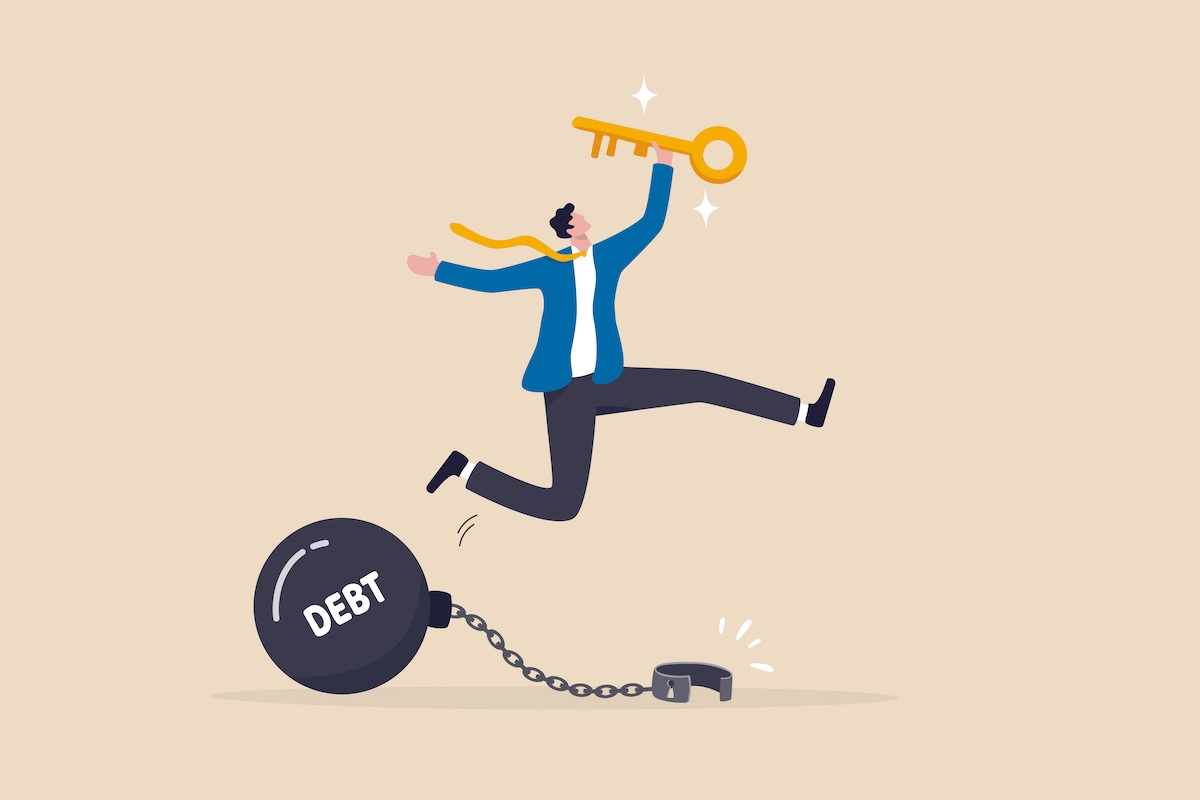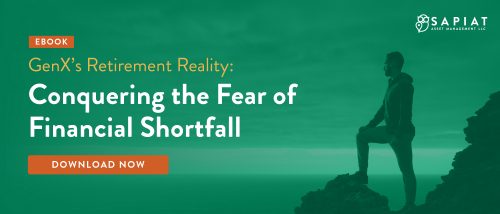
Breaking Free: A Gen Xer’s Guide to a Debt-Free 2024
If you’re reading this article, you’re probably contemplating the financial weight, also known as debt, that may be holding you back from true financial independence. You may even belong to a subset of individuals who have entered their retirement years with a heavy debt burden.
As a fiduciary fee-only financial advisor in Greeneville, TN, our advice has always been clear: retiring without debt is better. But let’s face it, sometimes life throws us curveballs, and we find ourselves strapped for cash and grappling with debt even after we’ve said goodbye to our working years.
Living with debt can hinder your lifestyle and put you at risk of losing much of what you’ve worked so hard to accumulate over three or four decades. Nobody wants to face repossession or foreclosure, especially not in the years when you should be enjoying the fruits of your labor – also known as the golden years.
Don’t despair! We’ve created this guide for Gen Xers who want to become debt-free in 2024. Our primary focus in this guide is to provide practical steps that can impact your future financial security and lifestyle.
The financial freedom you’ve been yearning for starts here.
Three Basic Tactics to Becoming Debt-Free in 2024
If you have debt, then the harsh reality is you are dealing with monthly payments that are eating into your cash flow, limiting your options, and may be causing you a great deal of stress that you don’t need at this stage of your life.
This is where a comprehensive financial plan with a debt-reduction strategy is important. As Benjamin Franklin once said, “A failure to plan is a plan to fail”. In other words, you should have a clear plan of attack to address your debt and not having a plan is not an option.
Here are three core tactics that should be a part of your debt-reduction strategy:
1. Create a Realistic Budget
Develop a realistic monthly budget that details your income and expenses. This should be an objective look at how you are currently spending your income. Be honest with yourself about what your needs are. Maybe it’s time to adjust your expectations or lifestyle to get your spending habits in check.
2. Pay Off Credit Card Debt
There are two ways efficient ways to target credit card debt repayment:
- You pay off the highest interest rate debt first
- You use the “snowball” method, which involves tackling your debts, starting with the smallest balance first (smaller snowballs) and then working your way through larger debt obligations (bigger snowballs).
There are pros and cons to each method. Choices depend on your financial goals, personal preferences, and amounts of discretionary income.
Pros of Using the Snowball Method
- This method prioritizes paying off the smallest debt first, providing a sense of accomplishment and motivation to continue.
- It’s straightforward, as you focus on one debt at a time, making it easier to manage.
- You have more funds for larger debts as smaller debts are paid off.
Cons of Using the Snowball Method
- Since you may not initially target higher-interest debts, you could pay more interest over time.
- It may take longer to clear all debts, especially those with high interest rates.
Pros of Using Highest Interest Rate Debt First
- Interest Savings: This approach minimizes the total interest paid over time by initially tackling the most costly debts.
- Faster Debt Elimination: You’ll pay off all debts more quickly than the snowball method.
- Financial Efficiency: It’s the most cost-effective strategy for interest payments.
Cons of Using Highest Interest Rate Debt First
- You may experience a different psychological boost than the snowball method since it may take longer to eliminate smaller debts.
- Managing multiple high-interest debts simultaneously can be challenging.
3. Consider a Balance Transfer
Opting for a balance transfer on high-interest credit card debt can be a strategic move that brings some financial relief. By transferring your existing debt to a new credit card with a lower interest rate—often 0% during the introductory period—you can significantly reduce your debt service expense.
This enables you to pay down the principal amount more quickly, accelerating your path to becoming debt-free. A balance transfer is like hitting the “pause” button on accumulating interest, allowing you to regain control of your financial situation.
Pros:
- Transferring your balance to a lower-interest-rate card saves you significant money on interest payments.
- Consolidating multiple credit card debts onto one card streamlines your financial management, making tracking and managing payments easier.
- A balance transfer can temporarily relieve high interest rates, allowing you to pay down your debt amount faster.
- If you reduce your credit utilization ratio by transferring balances, it may positively impact your credit score.
Cons:
- Many balance transfer offers come with fees, which can offset some of the interest savings.
- The low or zero interest rate typically lasts for a limited time, so the interest rate may increase significantly if you don’t pay off the balance during this period.
- Opening a new credit account and closing old ones can temporarily lower your credit score.
- Transferring balances can create the temptation to accumulate new debt on the old cards, worsening your financial situation.
- Explore options to consolidate multiple debts into a single, reduced-interest loan. Refinancing your mortgage or consolidating student loans can also lower overall interest payments. This may become more difficult as lenders tighten their lending practices based on rising defaults in an unstable economy.
Sapiat Asset Insights: Our core philosophy centers on financial planning, and it’s about much more than just numbers. We understand that your ultimate goal isn’t simply to reach a financial milestone expressed in dollars; it’s to achieve your life goals and fulfill your dreams of a secure, comfortable lifestyle during retirement.
But let’s be clear: a well-crafted plan is only worth a little if it sits on a shelf and gathers dust. It’s the action and execution that make all the difference. It is a well-known fact that financial discipline is not fun. That is why we’re committed to advising you and providing the ongoing support and guidance you need to achieve your goals.
Get to Know Sapiat Asset
At Sapiat Asset, our sophisticated financial planning uses a holistic approach. It’s the action and disciplined execution that make all the difference. This is why we’re committed to helping you plan and provide the ongoing support and guidance you need to stay true to your objectives. We’re in it for the long haul to help you pursue the goals you’ve set for yourself.
By making strategic choices today, you can set yourself on the path to a debt-free 2024. Connect with us to learn more about our financial planning services for Gen X.

